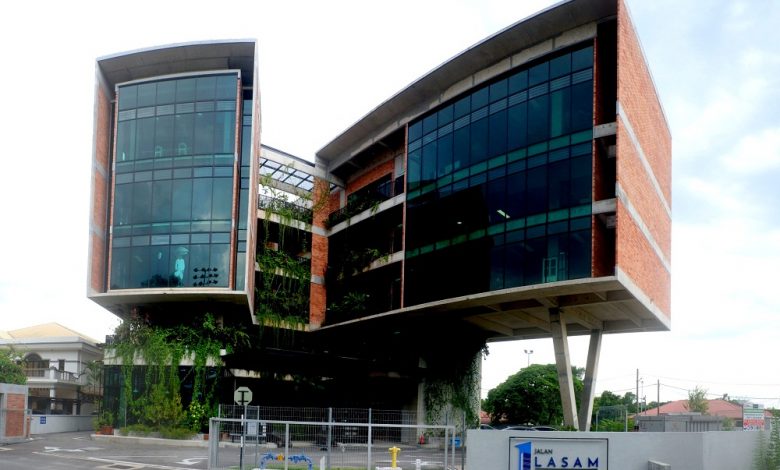

By Joachim Ng
With eight more years to go, how are things shaping up under the Perak Sejahtera Development Plan 2030 with its mission of “Driving Sustainable, Inclusive and Dynamic Socio-Economic Development” for peace and prosperity?
The plan, launched by the State Government in Ipoh on 29 March 2021, outlines five strategic thrusts, namely, balance of physical and socio-economic development, smart collaboration, sustainable use of resources and nature, efficient and caring service delivery system, as well as quality and high value expertise.
In a nutshell, three main components will be taken into consideration for every development project. These are: environmental sustainability, wealth creation, and social wellbeing. Among the focus areas are (I) Green Technology (ii) Hospitality & Tourism (iii) Minerals (iv) Property (v) Digital Economy and (vi) Ports & Logistics.
How many sectors of the state economy are geared up to accomplish the third strategic thrust of sustainable use of resources and nature? Let’s take a brief look at four of the six focus areas: green technology, hospitality & tourism, minerals, and property.
Driving up north into Kinta Valley, busloads of tourists from central and southern regions will be greeted by a very ecologically hostile sight — scarred limestone hills that speak a lot about the destruction of nature for economic development. The hills are mined for calcium carbonate and silica to produce cement, stones, and other aggregates for the property market and other industries such as glass and steel making.
Production of cement for use in concrete is responsible for 8% of the global emissions of carbon dioxide. The building industry is responsible for voluminous negative environmental effects including half of all the waste that ends up in landfills, making this industry one of the most polluting in the world. Hence, there is a double reason to develop green technology to replace limestone and save the hills.
But is anyone taking the lead to push the green effort? Two or three local universities should be commissioned to find viable alternatives to limestone for making cement. The Real Estate Housing Developers’ Association (REHDA) and the International Real Estate Federation (FIABCI) should take the initiative to push university research and guide it.
Overseas, experiments have already been conducted on substitute materials such as mycelium, cornstarch, and hempcrete. The mycelium of fungus has great prospects as it is organic and its root-like fibres have potential use as a super strong water-, mould-, and fire-resistant building material. Another bio-based material is cornstarch derived from maize. Mixing water with cornstarch results in a hardened material.
Hempcrete is a building material made from the inner woody core of the hemp plant. Hemp is a very fast growing plant and 165 kg of carbon can be absorbed and locked up in 1m3 of hempcrete wall. To make it load bearing, hempcrete needs to be encased in a wooden or bamboo framework. This should not raise any environmental concern, as idle land can be devoted to the cultivation of commercial timber and bamboo forests.
For encouragement on how far new research can go in producing dramatic results, look at 3D printing. When it was invented in the 1980s, its popular usage in those early days was in the making of instant toys.
By 2020, 3D-printed homes were sprouting up in many American cities providing affordable yet comfortable accommodation to the homeless. In 2021, housing developers launched 3D-printed homes for the mass market, drawing purchasers who were attracted to its low cost, short construction time of six weeks, and environment-friendliness. A few American developers hailed it as the predominant paradigm for home construction in the future.
Printing houses rather than nailing them together saves up to three tons of carbon per housing unit in the form of scrap wood, discarded cement, metal bars, and other construction materials that are dumped in huge quantities into landfills. Latest news comes from the University of Maine in America where researchers have 3D-printed an entire house from wood fibres and bio-resins — a world first.
It is also possible to build condominiums with the idea of using them as renewable energy hubs. Fix ultra-thin solar panels to every wall that faces the sun. If half the façade is covered thus, the amount of electricity generated can meet a quarter of the building’s energy demand. The other half can be draped with creepers to absorb CO2 and generate oxygen. The walls of double-storey landed homes can similarly be draped with creepers.
Rainwater downpipes should also be installed in such a manner as to harvest the water and store them in huge tanks on the ground. Every building should be constructed with the inclusion of a rainwater system. For existing buildings, a system can be retrofitted.
Green efforts shouldn’t be voluntary. They are prescriptions to cure climate sickness, and hence the Government must push itself, all industries, and the whole of society into following the prescriptions for survival of humanity.
Do nature-friendly houses need to be expensive? This, unfortunately, is the way properties have developed in Malaysia. You have to spend a million ringgit to live in a luxuriously exclusive housing estate or 5-star condominium with its own tree park and water features. Thereafter, contribute a hefty sum monthly to help maintain these private facilities.
If you want to touch nature daily for free, stay put in your kampung off the beaten track. But this is so old thinking. About 75% of Malaysia’s population now live in urban areas, according to the latest census. Fifty years ago, it was just 28%. The number of urban dwellers has risen from 3 million to 24.4 million divided into 6.3 million households with 3.9 persons averagely per urban household.
Decades ago, we should have copied the Singapore housing model as some other nations have done. In Singapore, all Housing Development Board projects are within 20 minutes’ walking distance to a resplendent neighbourhood tree park maintained by the Government. The HDB doesn’t build houses; it builds integrated self-contained nature-friendly communities that anyone can afford to live in quite cheaply.
Most of our neighbourhood green spaces look as if they are meant for playing soccer, with a playground in one corner and just a few trees. We need lots of trees concentrated in a park for richly-oxygenated air as well as a healthier and longer human lifespan.
HDB flats are family-oriented in that there are no central corridors running alongside all the units on a floor, as is done in Malaysia. Central corridors make our low-cost flats resemble school buildings rather than homes, and they shut out natural lighting. Public transit connectivity with low carbon emission is the most visibly outstanding feature of HDB living.
Where Singapore excels, we fall behind. But it is not too late for our Government and property industry to make a rapid transformation, as climate change isn’t sweeping us into the sea yet. There is still a bit of time left.
========================================
Disclaimer: The views and opinions expressed in this article are those of the author and do not necessarily reflect the official policy or position of Ipoh Echo


